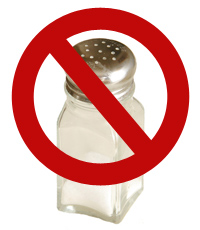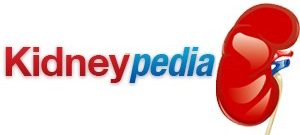
When your kidneys fail to work properly, hemodialysis is a way to replace what they do so you can continue to live a relatively normal life. Usually hemodialysis is performed 3 times weekly for approximately 4 hours. While hemodialysis has come a long way and is increasingly more effective, it is still not as efficient as healthy
kidneys, in part because you can’t be hooked up to the machine after every meal. Because of this, it is recommended to go on a special diet limiting certain nutrients and fluid so they don’t build up between treatments.
Foods to Avoid
Most of the time, nutrients that are restricted on the dialysis diet are phosphorus, potassium, and sodium.
Phosphorus is a nutrient that is present in most foods, especially those that contain protein. It is impossible to avoid phosphorus altogether; however, limiting phosphorus to approximately 1000 mg daily or less will keep it from building up in your bloodstream.
When phosphorus builds up, it can combine with calcium and calcify arteries and veins and lead to heart disease, peripheral vascular disease and other medical conditions. You may suffer from heart attacks, the need for amputations, blindness or other problems. High levels of phosphorus may also cause brittle bones or itching between treatments. Fortunately, when phosphorus is well controlled these conditions can be avoided.
Foods that contain phosphorus include: dairy products or anything made with milk such as yogurt, pudding and ice cream, nuts and beans, and processed foods with phosphate additives, especially dark colas. Look on the ingredients label for anything that has ‘phos’ in the word, and avoid that food.
Potassium is another nutrient that may build up in your bloodstream between treatments if you eat too many high potassium foods. High levels of potassium can cause cardiac arrhythmia and other dangerous heart problems. Most dietitians recommend between 2000 and 3000 mg of potassium daily for patients on dialysis, but this might be adjusted depending on your individual potassium labs. Certain high potassium fruits and vegetables you may need to avoid include bananas, oranges, potatoes, tomatoes, dairy products, nuts, beans, and whole
grains. Also avoid anything with ‘potassium chloride’ in it, which is often used as a preservative or as a substitute for sodium.
Along with many other diets, the dialysis diet also requires a sodium restriction. It is not quite as strict as, for example, the American Heart Association’s 2000 milligram or 2 gram limit, but you should follow this restriction if your physician has indicated that you need it, or if you have heart failure, coronary artery disease, or other heart conditions. All other dialysis patients usually are given a 2000-
Sodium is usually referred to as ‘salt. It is in table salt, as well as many other salts and compounds used as preservatives. Processed foods tend to be high in sodium, so the fresher the food, the better it is to stick to this restriction. Avoid also using table salt or seasonings that have sodium in them. Instead season your foods with aromatics like garlic and onions, meaty flavors like sodium free broths, or other sodium free flavoring options, like Mrs. Dash.
Fluids
Along with the restrictions above, the dialysis diet also involves a fluid restriction. Usually the restriction is manageable to most patients, between 1500 mL and 2000 mL daily depending on the patients weight and labs. 1500 mL is approximately 6 cups or 48 fluid ounces, and 2000 mL is about 8 cups or 64 fluid ounces.
Remember, however, that there is fluid in certain foods and not just in beverages. Soups, popsicles, jello, and ice cream all count as fluid. Anything that is liquid at room temperature counts as a fluid. It may help you to keep a 64 ounce container in the refrigerator and pour an equal amount of fluid each time a beverage is consumed, that way you know how much fluid you have consumed for the day. If you consume too much fluid between dialysis treatments, you may have trouble breathing, gain excessive weight, or get ‘Edema’, which is swelling of the extremities.
Foods to Eat
Many dialysis patients sometimes ask, ‘Now that you’ve told me everything I can’t eat, what can I eat?’ It sometimes seems like there are so many restrictions that you will starve; however, it is possible to eat a normal healthy diet while on hemodialysis. Some examples of good substitutions are :
Instead of oranges or bananas, choose apples or grapes.
Instead of ice cream try sherbert or sorbet (dairy free).
Instead of traditional dairy products, try rice milk or diary free substitutes that are low in phosphorus.
Instead of spaghetti with tomato sauce, try spaghetti with pesto sauce.
Instead of canned soups, try sodium free broths with cooked veggies or meats added.
Instead of beans, try a side like corn or peas.
Instead of mashed potatoes, try rice with gravy.
Instead of nuts, try to popcorn as a snack.
Example Meal Plan
Breakfast:
2 eggs, scrambled
1 piece of white toast with trans-
1 cup of grits
8 fluid ounces of apple juice (diabetics use caution)
Lunch:
Turkey Sandwich
2 slices white bread
3 slices of low-
1 piece of romaine lettuce
1 tsp or mustard and/or mayo
1 cup of low sodium popcorn
1 cup of grapes
8 oz water, sprite,
ginger ale (diabetics use caution)
Dinner:
3-
2/3 cup rice with
gravy
1 small white dinner roll
1/2 cup of green beans
1/2 medium apple
8 oz water, sprite,
ginger ale (diabetics use caution)
